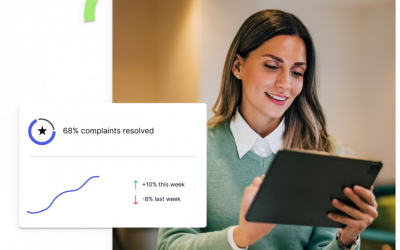Managers thrive on knowing the ins and outs of their workforce. Things like which employees are fully engaged, if any of their top performers are planning on leaving, if there are any workers in the wrong job position, or if any of the employees’ strengths are not being put to best use. But this kind of information is not always easy for managers to come by, especially if employees and management have a “disconnect”. Finding answers to these questions are ideal use cases for workforce analytics. Companies big and small are beginning to find success in using analytics to better understand their workforce, giving them the intelligence to settle common issues and improve the output of individual workers and the organization as a whole.
The right person for the right job
Selecting the right person to do the right job is one of the biggest problems that any company faces. Selection of candidates is restricted to their performance in interviews. If the panel is impressed in that short span of time, the person invariably gets the job. This is a time honored way of selecting staff and is certainly not a bad way to go about it. However, there are times when people may be more suitable for some other role. Long time serving staff could also be ready for greater responsibilities. These are scenarios that can be handled well with the help of workforce and HR analytics.
Putting HR analytics to work
There are many areas where analytics can benefit HR. They can be broadly classified as follows.
Workforce optimization and planning
This is a streamlining effort where all unwanted processes that take up time and valuable space in the work flow are reduced so to maximize the productivity of staff and minimize overall headcount. This is called “lean” in many companies and it looks towards reaching a process flow and staffing model that is smooth and efficient.
Workforce transition
This is a way to record the work place activities of employees so that management has a portfolio of job expectations and tasks they can reference, and employees entering the organization can become productive in the least amount of time possible. Measuring the time to onboard and transition is important and a proper balance must be maintained to ensure that new employees have the knowledge and tools to be successful in a reasonable amount of time.
Attrition risk analysis
Every company should have a good level of attrition, this is definitely a healthy sign, but if there are too many, particularly key staff leaving one after the other, workforce analytics can help in identifying key risk indicators. With the possible reasons identified, companies can form plans and strategies to retain the best staff.
Productivity
Key performance indicators (KPIs) can be formed to assess and manage the strengths and weaknesses of staff and work processes. These composite indices can prove to be of great value in ascertaining what is going wrong in a business and why.
The above pointers are only a small number of potential areas where workforce analytics can be employed. When used to their fullest, workforce analytics can look at each staff member as a resource that produces profit for the company. By leveraging science and mathematics, HR can help optimize its resources for maximum capacity. The benefits that an organization can derive with workforce analytics are plentiful and outweigh the investment required in tools and services to get the job done.




